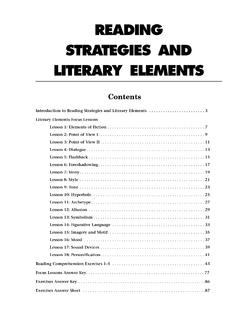Transcription of Research Paper Assignment - Portland State University
1 Research Paper Assignment Introduction to Popular Culture Spring 2013. Assignment description: You'll produce a minimum 6 page Research Paper on a popular culture phenomenon of your choosing. Your Paper must be a critical analysis of your chosen topic, based in the appropriate theory and methodology, with summary and description kept to a bare minimum. Start with something you are interested in. Ideally you will choose some emerging idea, product, trend, movement, etc. that you are into but the rest of us might not yet know about.
2 Or you could put a new twist on something we all think we know enough about but are missing something critical. Or you can choose a historical approach that illuminates the underexamined influence of an older popular culture text. The topic is open. Your job is to help create a deeper understanding of something most people engage uncritically. Your reader should understand what cultural work is being performed by the text. Whether you like it or not is virtually irrelevant as would be any attempt to convince the reader that they should or should not like the text.
3 Your Research should be supported with a minimum of 3 scholarly sources (only one of which can be an assigned course reading) and 2 popular or primary sources. Chose a subject that you will be excited about, maybe something that you are fairly familiar with yet would like to know more about. For example, you might write a Paper titled, From Underground to Aboveground: Nirvana and the Co-optation of Subculture. Or Deconstructing Bodies: The Female Midriff. Or Can the Rich Authentically Sing for the Poor: Borrowed Social Capital in Springsteen's The Ghost of Tom Joad.
4 Or . There are several steps in the Research production process, all of which must be completed for full credit. The component parts are the Proposal, Annotated Bibliography, Rough Draft, Peer Review, and Final Draft. While these writing assignments together represent a large portion of your grade, each step is an opportunity to address your strengths and weaknesses, and help to orient your progress throughout the process of your Paper (hopefully, also helping you produce a better grade and get through the mire of procrastination!)
5 1) Proposal/Abstract Thesis statement due Tues 4/16: For this initial part of the Assignment , you will produce a thoughtful thesis statement on a topic of your choice. Remember that you will probably modify your thesis your Research and writing will help to guide your ideas. Your proposal will be a page long and should detail what you hope to accomplish in your Paper , outline the major themes, and identify the critical lens you propose to use. In popular culture terms, this is the blurb that describes your Paper for your reader/audience.
6 This stage of the project provides you instructor feedback and assistance before you start drafting. Be sure to have a clear identifiable thesis. You will want to take a strong position on your topic The Pros and Cons of X Popular Culture Phenomenon is not sufficient. Rather, you should take a position on the merits of the cultural work being done by the topic you choose. Please ask your peers, your mentor, and your instructor if you are unsure of how to do this. The proposal is not a contract. Your topic will and should change as your progress through your Research journey.
7 You will receive feedback on the appropriateness of your topic, whether the scale of the project is workable, and other practical matters. 2) Annotated bibliography due Tues April 23: An annotated bibliography contains descriptive or evaluative comments on the sources you are working with in your Research . Please follow correct MLA formatting as appropriate (YOU DO NOT NEED A COVER PAGE save the Paper ). This source list follows the same form as the regular References list page, however your commentary follows the last period of the citation.
8 Please provide at least three sentences of description for at least four sources. You will receive feedback on the appropriateness of your sources given your topic, and an assessment of how on track your project seems to be. NOTE: Though the References list page that accompanies your rough and final drafts will obviously have many of the same works as your annotated bibliography, since your Research is an evolving process there should be some differences. One difference is that the References list page that accompanies a draft of the Paper will not be annotated.
9 An annotation is a summary and/or evaluation. [The following information on annotated bibliographies is taken from the OWL at Purdue: ]. An annotated bibliography includes a summary and/or evaluation of each of the sources. Depending on your project or the Assignment , your annotations may do one or more of the following: 1. Summarize: Some annotations merely summarize the source. What are the main arguments? What is the point of this book or article? What topics are covered? If someone asked what this article/book is about, what would you say?
10 The length of your annotations will determine how detailed your summary is. 2. Assess [Analysis]: After summarizing a source, it may be helpful to evaluate it. Is it a useful source? How does it compare with other sources in your bibliography? Is the information reliable? Is it this source biased or objective? What is the goal of this source? 3. Reflect [Context/Reflection]: Once you've summarized and assessed a source, you need to ask how it fits into your Research . Was this source helpful to you? How does it help you shape your argument?


